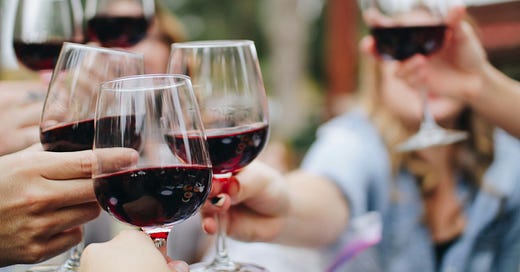Hello there,
In case you missed it, you can now check out some of these intriguing stories in video format: here are some reels on crazy startup stories, a marketing disaster, and how the world isn’t designed for women. Don’t forget to share feedback!
We’ve already seen a few examples of how marketers trick us with the technique of framing.
But what about something like food- something we’re so fond of and love consuming- to the point that all foodies consider themselves experts at differentiating the good stuff from the crap?
Turns out we’re prone to a host of marketing techniques even when it comes to food.
Taken aback? Still in disbelief? Maybe what comes next will change your mind:
- Dog food blooper: Participants in a study were given 5 Pate dishes (a paste-like item made with meat) for tasting and then they were told that 1 out of the 5 plates wasn’t Pate but dog food. When asked to identify which one was dog food, how many do you think were able to answer correctly? Zero, of course. If you can brand dog food with an attractive name/description and get away with it, imagine what restaurants can do with us every day.
- Pepsi Challenge: Coke spends billions yearly reinforcing the “Coke=Happiness” association. The effect? Consumers’ brains have been etched with that idea, and when we drink Coke, we genuinely believe that it’s better than any other drink because we associate it with happiness. Pepsi’s marketing team knew that their product tasted better so they launched the Pepsi Challenge-a blind taste test to determine which product tasted better. When participants knew which drink they were having, 80% said Coke was better. But when they didn’t know (i.e. during the blind test), a shocking 53% chose Pepsi as the better one! In short, the idea of having Coke felt better, but without the idea, Pepsi beat Coke in terms of taste! Consumers probably love the idea of Coke more than the Coke itself!
- Wine experts: In another facepalm-inducing study, expert sommeliers were given 2 wine samples. Both were white wine, but one was mixed with red color so it looked like red wine. Shockingly, these experts who’d spent years studying, tasting, and consuming wine, judged the modified one as “red wine with hints of raspberry and mahogany” while the white honey was said to contain notes of citrus and honey! This isn’t to say sommeliers are buffoons. It simply shows that even the most seasoned tongue is overridden by what the brain tells it to believe.
- Red Bull & Wings: In a study, 3 groups of participants were given a cocktail made of vodka, fruit juice, and Red Bull (it was the same drink for each group). The first group was told they were being given a “fruit juice cocktail”, the second got a “vodka cocktail” and the third got “Vodka and Red Bull”. Out of the 3, it was the third lot that showed riskier behavior and greater confidence in approaching women. Same drink, but vastly different effects. It wasn’t the drink, but the story of drinking Red Bull that convinced the third group that they’d gotten wings.
- Story-selling: 2 groups in a restaurant were given a food item. One was given just a bare-bones list of the ingredients in it. For the second group, the chef told them the story behind the dish and threw in a treasured childhood tale to describe it. Both groups had the same food, but you can guess what happened by now. The second group reported having a much better experience. It was the story behind the dish that informed them and altered their mental model of it- which is why it tasted better.
There’s a gap between objective reality and our subjective experience of things based on our mental models. As Matt Johnson and Prince Ghuman point out in their book Blindsight, it is these gaps that brands & businesses try to exploit by altering our perceptions.
You may be scandalized after reading these examples but remember one thing- all these participants weren’t being fooled.
If you did brain scans of the Coke consumers or the ones who heard the chef’s story, you’d see that their pleasure centers showed more activation compared to their peer groups.
They genuinely liked their pick more because, after all, we don’t consume reality. We’re always consuming the story.
That’s why philosopher Alan Watts said “We eat the menu, not the food.”
Thanks for reading this piece. If you liked it, don’t forget to check out:
The Smartphone And Your Mind (Don’t miss this if you struggle with digital addiction)




